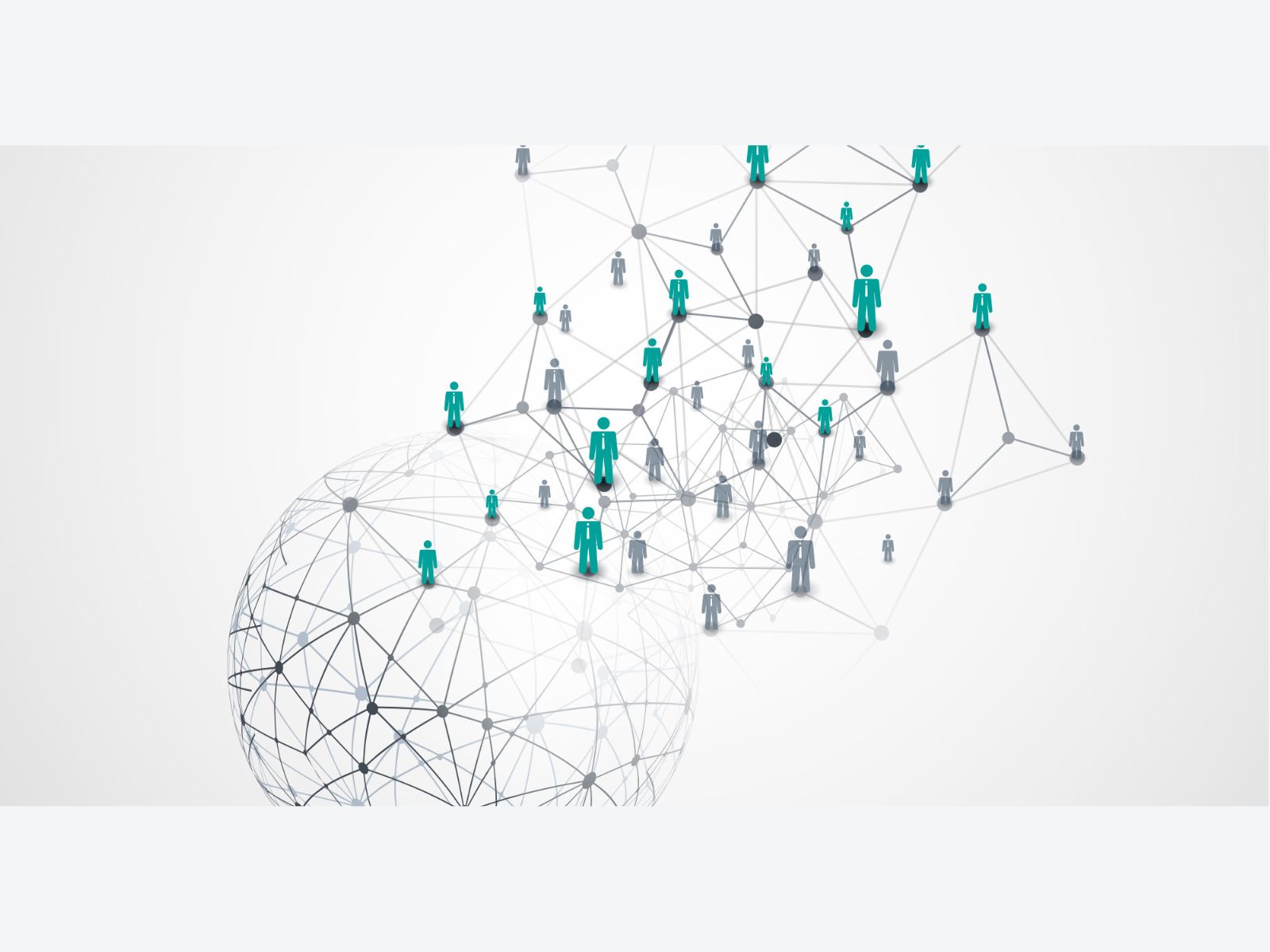LinkedIn has been an almost unalloyed success since it first crept into our consciousness, in most cases in and around 2005-6, and has become a truly indispensable tool for anyone in the professional recruitment world – be it an employer, a candidate or a recruiting firm. And unlike many other social media platforms it has remained pretty much scandal and controversy free. Sure, there have been the occasional gripes around the introduction of new features and the withdrawal of old ones, and, as with all software services, pricing, but in the scheme of things, it has broadly stayed true to its mission.
It’s takeover by Microsoft in 2018 led many in the industry to question its future direction, but, again by and large, it has stayed on course and has evolved as the broader world of talent has evolved.
But, in recent years, and the last twelve months especially, it’s not just been us and our colleagues here at TALiNT Towers who have detected an increasing blurring of the lines between LinkedIn and other purely social networks.
Without having to look too hard, we found lots of recent posts ranging from the banal – I like hip-hop, it’s my ruby anniversary, my first blind date, I ran a marathon – to the tragic and heart-breaking – losing a child, suicide, tales of abuse and so on.
Some of them are narcissistic beyond belief. ‘Have you missed me?’ or ‘I’m back!’. We can assure you no one noticed you went away.
Sometimes the more personal stories will try and make a relevant point, ‘why am I telling you this…?’, but most don’t. And whilst you would have to be incredibly hard-hearted not to empathise with many of the personal posts, there is still a question – why is this on LinkedIn?
The strength of LinkedIn has always been its focus: ‘I need to hire someone/I need to find a new job and/or get better at the one I have.’ The danger now is that focus becomes lost in a tide of irrelevant content.
In order to triangulate our hypothesis, late last year, we decided to do some research of our own. Research began with a quick Google search: ‘What is the point of LinkedIn?’. Trustpilot reviews came out on top with reviewers giving LinkedIn one and half stars… a poor rating, indeed.
Following that, we approached a number of trusted, senior contacts across the talent ecosystem – employers, large staffing firms and outsourcing providers and asked them for their views.
Here’s what we found.
What are the current pros and cons of LinkedIn
Unsurprisingly, LinkedIn continues to be the go-to destination for candidate identification and market mapping and remains the pre-eminent tool for doing so. But leaders also see the value in helping them to build their own brand and network.
Likewise, the cons were pretty much as we expected with the ‘noise’ of increasingly irrelevant content being seen as the biggest issue by some margin.
Pros:
- Strong reach for finding candidates and market mapping
- Real-time information for finding people with certain skills and at certain companies
- Allows for personalisation when reaching out to individuals
- Keeps personal brand relevant in the market
- Can be used to identify people across a wide range of geographies.
Cons:
- Increasingly becoming a general social media platform with less business-related content
- May not have as strong of an ROI as it used to be
- Candidates may be spammed and senior personnel may be withdrawing from or increasing privacy on the platform
- Noise on the platform makes it difficult to cut through and reach the desired audience
- Does not provide insight into the calibre of candidates
- Information on the platform cannot always be trusted
- May give people a license to create their own reality and portray themselves in a falsely positive light
- Constant approaches by salespeople can be annoying and intrusive.
Tools of the trade
LinkedIn Recruiter is seen as pretty much essential for recruitment activities. It was noted though that this tool is a generalised global tool and considering TA teams are now looking across borders, LinkedIn’s reach can be hard to beat.
LinkedIn Insights was also said to be useful but not seen as essential, with other tools increasingly being used as part of an overall approach. Interestingly enough, Matt Pycock, Global Head of Talent Acquisition at Kerridge Commercial Systems, said that there are other solutions coming on to the market that are cheaper and cover more data points so those new developments could be ones to watch out for.
Can businesses do without it?
The responses here were fascinating: for reach and visibility in professional recruitment LinkedIn is still essential. Interestingly, there was a view that a lot of users still don’t know how to get the most from the platform.
Alison Westwood, Head of Talent Acquisition at Zenith Vehicles, believes that she could possibly do without it in business but was unsure if there’s anywhere else to go that has the same mass of data to mine.
James Gordanifar, Global Head of Talent Acquisition, Early Careers at WTW, said that since they don’t pay for it, they feel they do get value from it. ‘I have to wade through all the nonsense to get to the value, but it is on there if you look for it. I also think it is good value because I have had relevant approaches about jobs and networking opportunities. It’s just that 90% of it is useless nonsense,’ he said.
Mati Pycock commented further that while he could probably do without LinkedIn, he’d possibly be missing out on some of the useful content, that it would be hard not to be present on this channel anymore.
This comment poses an interesting scenario. What was TA life like before LinkedIn? And if you’re not on LinkedIn, do you even exist? What, if anything, is its alternative?

The money trail
When the respondents to our survey were asked if they see LinkedIn as good value or not, we received a mixed bag of responses, but the majority of answers leant towards stating that it’s overpriced for what you get. One of our contributors went so far as to say that the price goes up every year with little to demand the increase in terms of new functionality.
Some said that the online training made available is incredible but that it came with a hefty price tag. As with every investment an organisation makes, if there’s no ROI, it’s best to bin it.
One head of HR in the broadcasting industry said exactly that. ‘I did try LinkedIn for training online as it has a huge level of material but pulled away from it as people didn’t make best use of it versus cost.’
One respondent stated that while LinkedIn outperforms other job platforms and forms a massive percentage of TA spend, that it is not good value for money at all. He said that it is starting to lose its attraction, in particular for certain groups such as development/programming roles, graduates and early careers roles, as well as low-level positions.
Ashley Ryall, Founder and Principal at Untap Social said that many users haven’t caught on to the fact that LinkedIn has become a news platform! ‘Over the last two years, they’ve brought editors, journalists and content experts onto their payroll. The biggest value LinkedIn offers is its ability to help us become good thoughtleaders. With LinkedIn news stories and trends, they expect to gain momentum, we can position ourselves with unique points-of-view about topics that matier and facilitate relevant, important dialogue with our audiences. And that’s just with the free version.’
Changes
Our commentators suggest a need for LinkedIn to focus on creating a more professional and curated platform. This includes removing unnecessary content, better integration with social media and increasing visibility in schools and colleges to educate young professionals on the benefits of building a personal brand on the platform.
Additionally, there is a call for stricter protocols around what is allowed to be shared, a way to validate content and a simplification of the platform to cut down on noise and overstimulation. There is also a suggestion for the support team to advise clients on how to make the most of the platform and for licence holders to have more transparency on what training their teams have undergone.
Adam Hawkins, Head of Search and Staffing, EMEA & LATAM, LinkedIn said, that they recognise that there has been an increase in social chattier on the platform as the pandemic was a catalyst for people sharing more personal experiences as work and home lives
increasingly blurred. But he believes there is a shift away from the personal posts to more knowledge sharing and encourages users to take part in these useful conversations.
‘Over the last two years, they’ve brought editors, journalists, and content experts onto their payroll. The biggest value LinkedIn offers is its ability to help us become good thought leaders.’ – Ashley Ryall, Founded and Principle at Untap Social
Conclusion
LinkedIn is still very much a well-respected, incredibly useful (borderline essential!) tool for employers and recruiters alike but seems in danger of losing its way a little bit. The vast majority of the niggles its customers have are not dissimilar to those of many other global software providers (too expensive, functionality isn’t exactly what I want, etc., etc.) but what is clearly troubling many is frankly the increasing levels of social media-type noise. And here’s the thing, LinkedIn isn’t a social service, it’s a commercial enterprise with a pretty clear focus and generally the people generating the noise are not paying customers. A right to free speech doesn’t mean a right to free posting!
It’s not for us to say whether this can be solved by tweaking the algorithm or by introducing clearer guidelines or even a code of conduct. Yes, a simple Google search will tell you in order to clean up the noise on your feed you should clear out your contacts list, follow different pages and people and so on. But it appears that an awful lot of people would like it to do something.
At the end of it all, LinkedIn does own the highest market share. What are the alternatives? Going back in time to the old school rolodex won’t cut the mustard. But it does feel as if this means we’re all in a relationship with LinkedIn because there’s just no one else to date.
As the breakthrough of OpenAI’s ChatGPT, game changers can come seemingly out of nowhere. LinkedIn has a tonne of goodwill and customer loyalty, don’t blow it.











